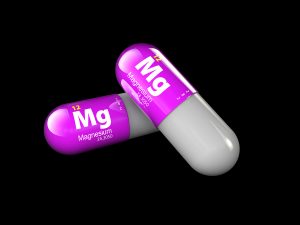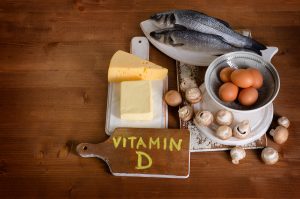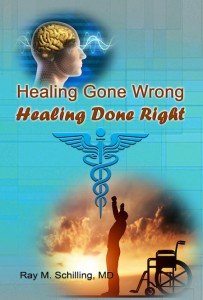Dr. Tasneem Bhatia, also known as Dr. Taz gave a lecture about weight gain in menopause. This was part of the 24th Annual World Congress on Anti-Aging Medicine (Dec. 9-11, 2016) in Las Vegas that I attended. The full title of the talk was “Hormone Balance and Weight Control in Menopausal Women”. Dr. Taz practices integrative medicine at CentreSpring MD, Atlanta. GA.
A few statistics about menopause
Weight gain in menopause is common. There are 50 million women who suffer from this in the US. Globally 300 million women have this problem. The average weight gain is between 5 and 50 pounds. There may be a small percentage of women where a genetic component comes in, and where all the females in the ancestry had a weight problem after menopause. But we do not know for certain what is genetic and what is due to hormone deficiency. It is only in the last few decades that doctors have determined how important hormone deficiencies are in menopause.
About 10 million women who are over 40-years-old need treatment in long-term care facilities.
We will see below that when physicians incorporate this knowledge into a treatment schedule, the weight problem can normalize. It is possible to reduce the costs of taking care for postmenopausal women with obesity and diabetes by 2/3 of these cases.
Pathophysiological changes in menopause
There are three intertwining aspects that drive weight gain in menopause. There is an altered metabolic rate, and less calories are burning, which makes you gain weight when you eat the same amount of calories. Secondly there is a significant decline of three key hormones, estrogens, progesterone and thyroid hormones in menopause. Third, as the weight rises and the other mentioned hormones are missing, it is harder for the pancreas to keep up with insulin production and insulin resistance develops. I will explain this further below.
1. Decreased energy expenditure
With the lack of the ovarian hormones there is a slowing of the resting metabolic rate. There is also is a decrease of energy expenditure from reducing fat oxidation. Overall there is less need to consume the same amount of calories as before. But the hormonal changes trigger hunger and cravings.
2. Ovarian aging
With ovarian aging there is less estrogen production in the ovaries. This leads to less ovulation in the premenopausal period. A lack of ovulations creates a lack of progesterone production. When there are anovulatory cycles, there is no progesterone producing corpus luteum reducing progesterone production further. When estrogen and progesterone are missing, this is a stress on the thyroid gland that is trying to partially compensate for the lack of the ovarian hormones. Eventually though there is permanent thyroid hormone production and hypothyroidism sets in. This is very hard on the adrenal glands that produce cortisol. For some time the adrenal glands can compensate for missing thyroid hormones with cortisol overproduction. But in time adrenal gland fatigue develops.
3. Insulin resistance
Insulin resistance can lead to diabetes, which becomes a real menace together with the metabolic changes of obesity.
Health risks of weight gain
Dr. Taz pointed out that around the time of menopause there are very specific risks that have to do with the metabolic changes. There is a definite risk for heart attacks and strokes as LDL cholesterol and triglycerides show an increase and arteries calcify from circulating calcium leaking out from the bones into the blood stream.
Osteoporosis is common in menopause; the brittle bones lead to an increased risk of fractures in the hips, wrists and vertebral bodies.
Postmenopausal women also risk increase of cancer, particularly breast cancer and colon cancer. The higher the weight, the more risky it is for these women to get one of these cancers.
Alzheimer’s disease and cognitive decline is also very common in menopause. This may be directly related to a lack of estrogen and progesterone, but may also have to do with overconsumption of sugar and starchy foods.
Hormone changes in menopause
Hormone changes in menopause can be complex. It is not only about a lack of estrogens and progesterone. All hormones work together. When there is weakness in one area (in the ovaries with menopause), this condition will affect the hormones that are acting in the same way or in opposition to ovarian hormones. In this way it is understandable that the thyroid gland can develop a weakness (hypothyroidism) or why the adrenal glands are over stimulated first, but later suffer from adrenal fatigue. In a similar way the pancreas produces too much insulin, partially because weight gain stimulates this. Typically the physician finds the fasting insulin level elevated with menopausal obesity. But as insulin levels are too high, the body’s insulin receptors get lazy and do not respond fully to insulin anymore. The name for this condition is insulin resistance. In time insulin resistance can lead to diabetes.
1. Lack of estrogen
A lack of estrogen in menopause is likely the single most important reason for weight gain in menopause. As estrogen secretion declines, visceral obesity increases. In addition there is an impairment of insulin regulation. With obesity there is an additional risk of developing diabetes.
2. Progesterone
Progesterone is the other female hormone that is reduced with menopause. Bioidentical progesterone cream can prevent osteoporosis and hot flashes in menopause. Bioidentical progesterone replacement can also help a menopausal woman to sleep better. In menopause the production of progesterone goes down by 75% while estrogen production drops down by 35%.
3. Hypothyroidism
Menopausal women often suffer from hypothyroidism (with elevated TSH blood tests). Weight gain is often part of this. As a result it is important to check for hypothyroidism in menopausal women. It is important to check for micronutrients like iodine, selenium and iron and if they are low, supplementation may be necessary. Some women develop an inflammatory thyroiditis, called Hashimoto’s disease. A thyroid nuclear scan can confirm this. The reason this is important to recognize is that after several years when it burns itself out, hypothyroidism develops often, which requires thyroid hormone replacement.
4. Cortisol response
The cortisol response to stress is suboptimal due to the decreased progesterone levels in menopause. Progesterone is a precursor of cortisol, so in menopause not enough of it is around to synthesize cortisol. But in a group of menopausal women following a significant stressful event cortisol production was much higher than in non-stressed women.
5. Other hormones
Other hormones like leptins and melatonin are also contributing to weight gain in menopause. In rat experiments performed ovariectomies (mimicking menopause) and there was a clear relationship between low estrogen levels and weight gain. Higher estradiol doses inhibited leptin expression resulting in weight normalization.
Leptin and melatonin are influencing insulin regulation. This can in time lead to diabetes in connection with weight gain. It is at this point when a woman’s body shape can turn from a healthier pear shape to an unhealthy apple shape. The extra visceral (abdominal) fat is very active metabolically and causes inflammation in the body. These changes can lead to high blood pressure, heart attacks, strokes and digestive dysfunction.
Treatment of weight gain in menopause: food, hormones and lifestyle
How do you treat a complex problem like weight gain in menopause? It is no surprise that this will require a number of treatment modalities in combination.
1. Diet
It is important to start on an anti-inflammatory diet like the Mediterranean diet. Any extra sugar should be cut out as surplus carbohydrates lead to fat deposits and higher blood lipids. Dr. Taz suggested a 1200-calorie diet. Reduce salt intake. Eat more food during the day until 4 PM, nothing to eat after 8 PM. Increase plant-based foods, lower or eliminate trans fats. Increase foods rich in probiotics (bifidobacteria) like kefir, yogurt and kombucha.
2. Exercise
Do some exercise in a gym where you combine a treadmill for 30 minutes with 25 minutes of weight machines for strength training. Aim for doing this 5 times per week. But it would be more beneficial doing it every day. Have additional activity bursts on and off during the day. Exercise has been shown to increase HDL cholesterol, which protects from heart attacks and strokes.
3. Stress management
Supplements like adaptogens help the adrenal gland to better cope with stress. These are available through your health food store. Meditation, yoga, self-hypnosis will all help to refocus and protect you from stress. B-complex vitamins and vitamin C strengthen your immune system and give you more energy. Building and maintaining community is another factor in reducing stress.
4. Establishing healthy sleep
Many postmenopausal women have poor sleep habits, partially from hot flashes (due to estrogen deficiency), partially from melatonin deficiency and also from progesterone deficiency. In the next section I will describe how to normalize these hormones. But in addition you need to educate yourself to go to bed between 10 PM and 11 PM every night and to sleep 7 to 8 hours. If you go to bed later, you will disturb your diurnal hormone rhythm and this will interfere with a normal sleep pattern. There is an age-related reduction of melatonin production in the pineal gland. This is why many postmenopausal women are deficient in melatonin. You may need 3 mg of melatonin at bedtime. If you wake up in the middle of the night you could take another 3 mg of melatonin. You may experience a few nightmares as a side effect; otherwise melatonin is very well tolerated.
5. Bioidentical hormone replacement
The complex hormone deficiencies described above are responsible for the many symptoms of menopausal women including weight gain. It is important to work with a knowledgeable health care provider who knows how to prescribe bioidentical hormones. Typically blood tests and possible saliva hormone tests are done before replacement. This establishes which hormones have to be replaced. Typically bioidentical progesterone is replaced first. Secondly, estrogen is added as Bi-Est cream, if blood levels indicate that it is low. If thyroid is required because of a high TSH level (meaning hypothyroidism) supplementation with Armour or a similar balanced T3/T4 combination is started. If fasting insulin levels are high, the doctor may want to start metformin as this is known to normalize insulin resistance. Blood tests have to be repeated from time to time to ensure adequate hormone levels.
6. Supplements
Every woman treated will likely require different supplements. But magnesium is one mineral that is often missing in the diet. 250 mg of magnesium twice a day will be enough for most women and men to balance internal metabolic reactions. Magnesium is a co-factor to many enzyme systems. Vitamin K2 (200 micrograms daily) and vitamin D3 (around 4000 to 5000 IU per day) in combination are important to prevent osteoporosis. Apart from these there are many options to take other supplements. Ask your healthcare provider what you should take.
Conclusion
This was a fast review of what Dr. Taz explained in a talk about weight gain in menopause. There are complex hormone changes that need to be addressed. Patients with menopause need to follow a well-balanced diet like the Mediterranean diet. Stress management skills need to be learnt. A regular exercise routine needs to be followed. Healthy sleep patterns have to be reestablished. And missing hormones need to be replaced not in synthetic forms, which are toxic to the body, but in the bioidentical forms. Postmenopausal women will feel better when this comprehensive treatment program is in place; and in time they will feel normal again.















